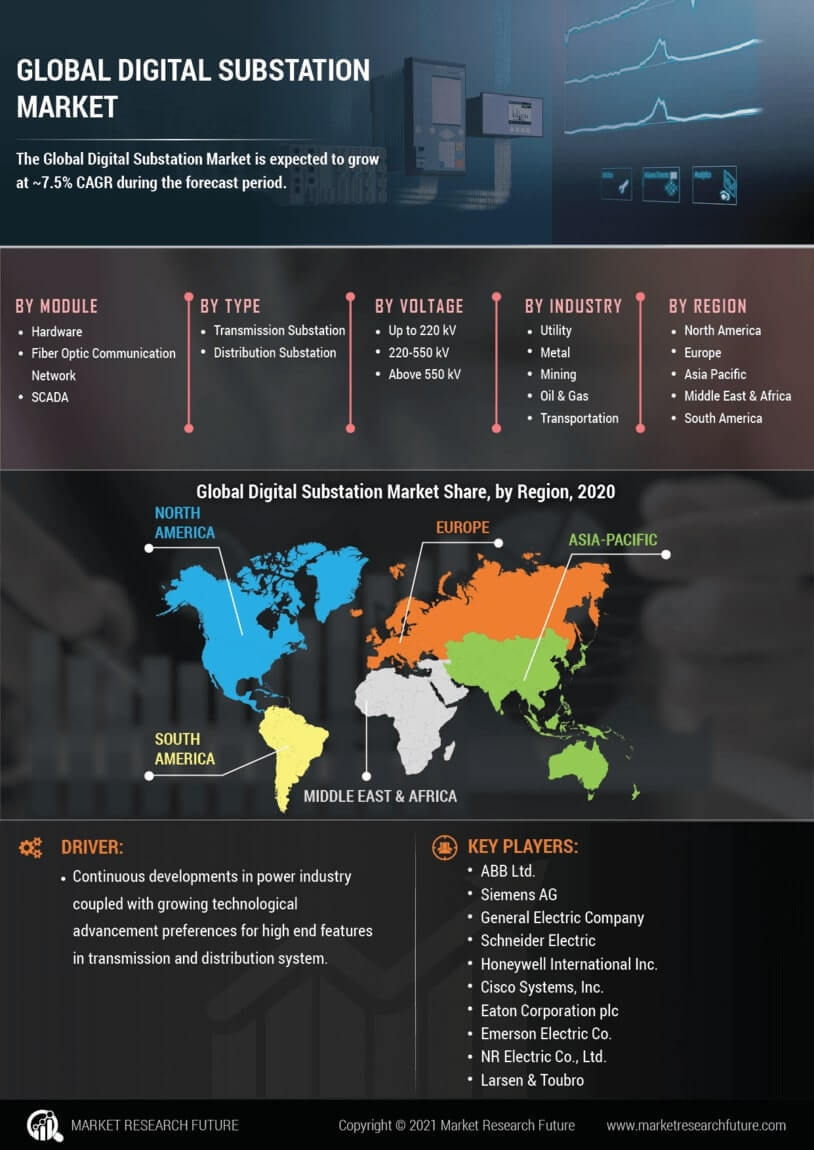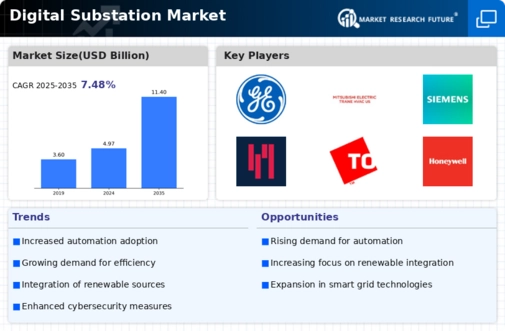Rising Demand for Energy Efficiency
The rising demand for energy efficiency is a crucial driver influencing the Digital Substation Market. As energy costs continue to escalate, both consumers and businesses are increasingly seeking solutions that minimize energy waste. Digital substations, equipped with advanced monitoring and control systems, enable utilities to optimize energy distribution and reduce losses. Reports indicate that energy efficiency measures could lead to a reduction of up to 30% in energy consumption in certain sectors. This growing emphasis on energy efficiency not only aligns with regulatory mandates but also enhances the operational performance of utilities. Consequently, the Digital Substation Market is likely to experience heightened interest and investment as stakeholders prioritize energy-efficient solutions.
Integration of Smart Grid Technologies
The integration of smart grid technologies is a pivotal driver for the Digital Substation Market. Smart grids enhance the efficiency and reliability of electricity distribution, allowing for real-time monitoring and management of energy flows. This integration facilitates the incorporation of renewable energy sources, which is increasingly vital as energy demands evolve. According to recent data, the smart grid market is projected to reach a value of approximately 61 billion USD by 2026, indicating a robust growth trajectory. The synergy between smart grids and digital substations not only optimizes energy distribution but also supports the transition towards more sustainable energy systems. As utilities invest in modernizing their infrastructure, the Digital Substation Market stands to benefit significantly from this trend.
Government Initiatives and Regulatory Support
Government initiatives and regulatory support play a significant role in shaping the Digital Substation Market. Many governments are implementing policies aimed at modernizing electrical infrastructure to enhance reliability and sustainability. For instance, various countries have established funding programs to support the deployment of digital substations, which are seen as essential for achieving energy transition goals. The International Energy Agency has noted that investments in digital technologies could lead to a more resilient energy system. As regulatory frameworks evolve to favor digital solutions, the Digital Substation Market is poised for growth, driven by both public and private sector investments.
Increased Investment in Renewable Energy Projects
Increased investment in renewable energy projects is a driving force behind the Digital Substation Market. As nations strive to meet their renewable energy targets, there is a growing need for infrastructure that can support the integration of diverse energy sources. Digital substations are essential for managing the complexities associated with renewable energy generation, such as variability and intermittency. Recent estimates suggest that global investments in renewable energy could exceed 2 trillion USD by 2030. This influx of capital is likely to spur the development of digital substations, which are critical for ensuring that renewable energy can be efficiently harnessed and distributed. The Digital Substation Market is thus positioned to thrive in this evolving energy landscape.
Technological Advancements in Communication Systems
Technological advancements in communication systems are transforming the Digital Substation Market. Enhanced communication technologies, such as fiber optics and wireless networks, facilitate real-time data exchange between substations and control centers. This capability is essential for the effective management of modern electrical grids, which require rapid response to fluctuations in demand and supply. The implementation of these advanced communication systems is expected to increase operational efficiency and reduce downtime. As the market for communication technologies continues to expand, the Digital Substation Market is likely to benefit from the integration of these innovations, leading to improved grid reliability and performance.


















Leave a Comment